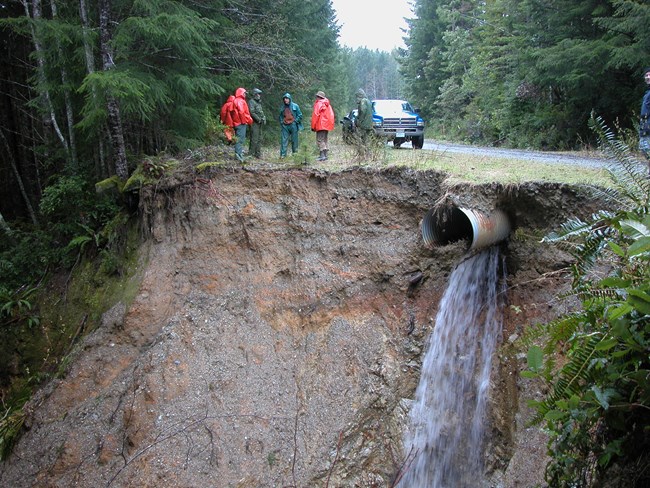
NPS Protecting Forests from Failing Logging RoadsOver the past decades, heavy winter storms have caused the failure of some legacy logging roads and culverts. While it may seem minor, these collapses can trigger entire hillsides to give way, destroying downslope forests and burying streams and rivers under massive amounts of sediment. In a single event, entire habitats can be wiped out. Since 1978, Redwood National Park has removed or stabilized over 250 miles of logging roads, yet about 100 miles remain at risk. Del Norte Coast Redwoods State Park has removed approximately 70 miles of roads, but more than 250 miles still require attention. To address this challenge, Storm Patrol plays a crucial role in monitoring and maintaining these vulnerable roads. This winter crew, funded by Save the Redwoods League, is an essential part of the larger Redwoods Rising restoration effort, working to protect forests, rivers, and wildlife from the ongoing impacts of past logging practices. Legacy Logging RoadsThe 1978 Redwood Act, which expanded Redwood National Park, and the 2002 addition of the Mill Creek watershed to Del Norte Coast Redwoods State Park, marked significant shifts in how we manage "nature parks." These newly protected lands had been heavily altered by decades of timber harvesting, leaving behind hundreds of miles of logging roads and aging culverts. When these roads or culverts fail—especially during heavy winter storms—they can trigger landslides, wiping out entire hillsides, destroying downslope forests, and burying streams and rivers under massive amounts of sediment. The damage to these ecosystems can be severe, threatening water quality, fish habitat, and the long-term health of the redwood landscape. Restoring these lands requires ongoing effort, and Redwood National and State Parks continue to address the legacy of logging through large-scale habitat restoration, road removal projects, and erosion control measures.
Return to Restoration at Redwood webpage
|
Last updated: February 14, 2025

